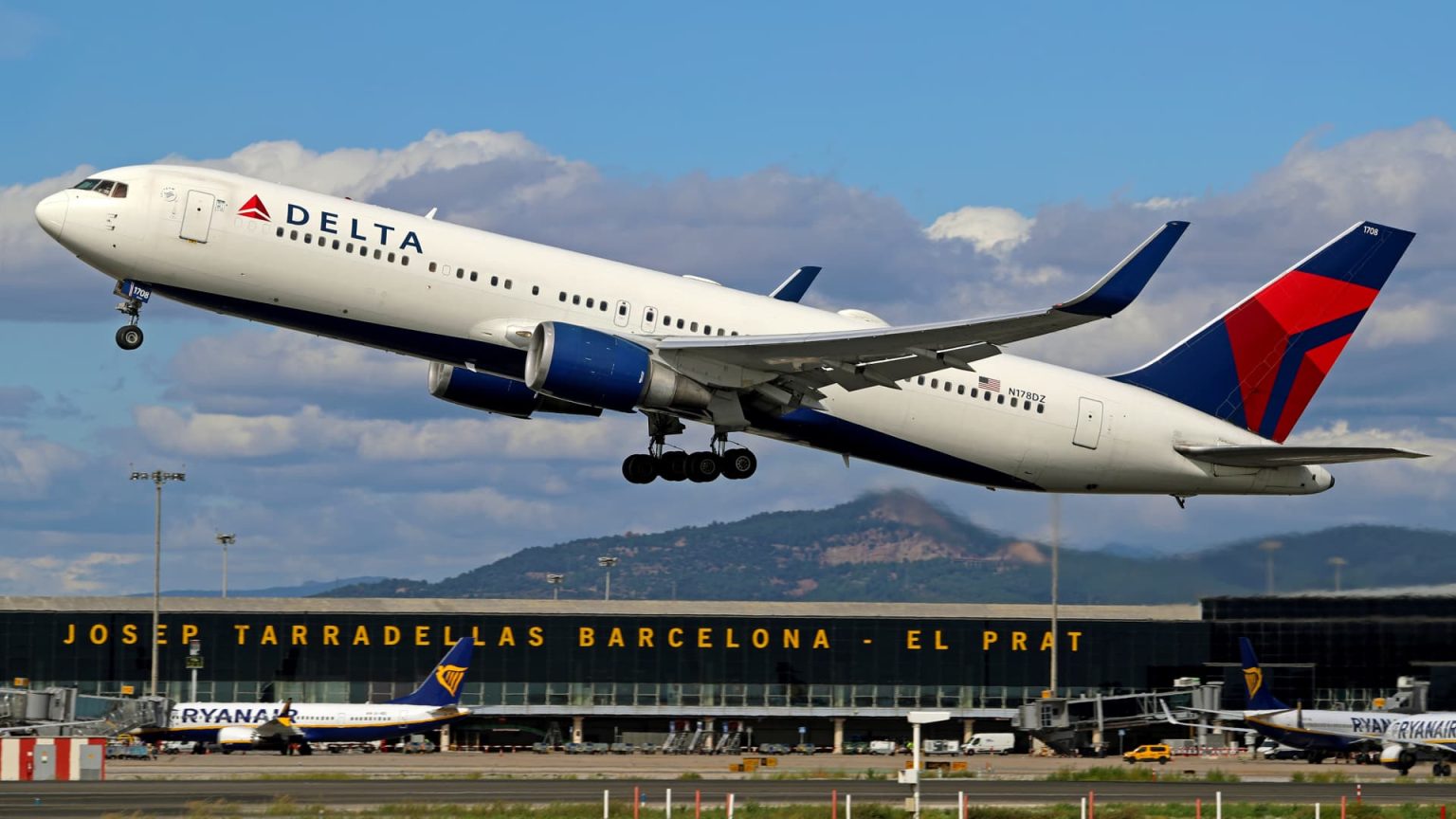Delta Air Lines has recently revised its 2025 profit forecast, citing lower-than-expected demand amid a surplus of flights. Despite this, the airline’s outlook for upcoming summer travel season exceeded expectations, indicating a stable booking pattern, though still below initial projections. CEO Ed Bastian emphasized a shift in consumer booking behavior, with travelers waiting until closer to their travel dates.
| Article Subheadings |
|---|
| 1) Delta’s Profit Forecast Adjustments |
| 2) Booking Trends and Consumer Behavior |
| 3) Financial Performance in the Second Quarter |
| 4) Cuts in Capacity and Strategic Adjustments |
| 5) Future Outlook and Corporate Travel Stagnancy |
Delta’s Profit Forecast Adjustments
Delta Air Lines has recently made notable adjustments to its forecast for 2025, reducing its expected profit margins significantly. It now anticipates adjusted full-year earnings to fall within the range of $5.25 to $6.25 per share, down from an earlier outlook of more than $7.35 per share. This revision reflects challenges the airline industry is currently facing, including increased competition and a higher volume of flights than demand can accommodate.
The cut in profit forecast is particularly striking as earlier in the year, Delta’s CEO, Ed Bastian, had projected 2025 to be the carrier’s best year. Now, as market dynamics shift, the airline is struggling with on-again-off-again tariffs and a hesitancy among consumers to commit to travel plans, which has dampened booking prospects.
Booking Trends and Consumer Behavior
As the travel landscape continues to evolve, Ed Bastian has observed noteworthy changes in booking patterns. Consumers appear to be waiting longer to finalize travel plans, shifting their booking behavior closer to departure dates. This trend has led to a recalibration of Delta’s yield management strategies, which now must accommodate this new consumer mindset.
“People are still traveling,” Bastian stated in a recent interview, underscoring that despite the altering booking patterns, the desire to travel remains strong. However, the stability in bookings comes at a lower level than the airline initially anticipated for this year, influencing Delta’s overall revenue expectations. In recognition of this shift, Delta aims to adapt its marketing and customer engagement strategies to better capture last-minute travelers.
Financial Performance in the Second Quarter
In the second quarter of the year, Delta reported an adjusted revenue of nearly $15.51 billion, marking a 1% increase from the previous year. The net income generated for the quarter stood at approximately $2.13 billion, or $3.27 per share, representing a remarkable 63% growth year-over-year. Analysts had expected the earnings per share to reach $2.05, illustrating how Delta outperformed consensus projections.
Key contributors to this financial performance included robust sales from first-class offerings and increased revenue from partnerships, particularly with American Express. The partnership generated $2 billion in revenue, indicating a shift toward catering to travelers willing to invest more in premium experiences, amidst a broader trend of declining fares across the U.S. airline industry.
Cuts in Capacity and Strategic Adjustments
Responding to changing market conditions, Delta has announced plans to implement strategic cuts in flight capacity, particularly after the summer peak travel season ends around mid-August. CEO Ed Bastian described these cuts as “surgical,” aimed at optimizing efficiency while ensuring that the airline remains competitive in an oversaturated market.
In April, Delta noted its inability to reaffirm earlier optimistic forecasts due to ongoing fluctuations in consumer demand and external market pressures. The company’s focus will now be on balancing flight operations with demand and potentially adjusting future flight schedules to streamline productivity.
Future Outlook and Corporate Travel Stagnancy
Looking ahead, Delta’s corporate travel revenues have stabilized, yet they align more closely with last year’s figures rather than the expected growth of 5% to 10%. This stagnation further necessitates adaptive strategies to invigorate corporate travel engagement, as many companies continue to re-evaluate their travel policies in light of economic uncertainties.
Delta is committed to enhancing its premium offerings, including upgrades to lounges and inflight services to keep pace with evolving consumer preferences. “We’re continuing to upgrade and update [these products],” Bastian remarked, signaling a proactive approach to remain relevant in a dynamic travel environment.
| No. | Key Points |
|---|---|
| 1 | Delta Air Lines revised its 2025 profit forecast down due to lower demand. |
| 2 | Adjustments in consumer booking behavior are impacting Delta’s revenue strategies. |
| 3 | In the second quarter, Delta saw a significant increase in net income and revenue compared to last year. |
| 4 | The airline plans to enact targeted flight capacity cuts following the summer period. |
| 5 | Corporate travel remains stable but does not meet earlier growth predictions. |
Summary
In conclusion, Delta Air Lines is undergoing a significant transformation in its operational strategies, driven by shifts in consumer patterns and an increasingly competitive market landscape. While the recent financial results depict resilience, the revised profit forecasts underscore the challenges the airline faces. Delta’s commitment to evolving its premium offerings and adapting capacity will be crucial as it navigates the remainder of the year and seeks to stabilize its position within the industry.
Frequently Asked Questions
Question: What led to Delta’s profit forecast revision?
Delta revised its profit forecast due to lower-than-expected consumer demand and an oversaturation of flights in the market.
Question: How has consumer booking behavior changed?
Consumers are now booking their travel plans closer to their departure dates, which has shifted Delta’s revenue management strategies.
Question: What were the results of Delta’s second-quarter financial performance?
Delta reported an adjusted revenue of approximately $15.51 billion and a net income of $2.13 billion in the second quarter, marking significant growth compared to the previous year.


